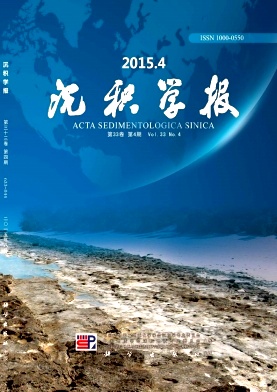Correlation of Stratigraphic Sequences between the Pearl River Delta and Its Offshore Continental Shelf since the Late Pleistocene
doi: 10.14027/j.cnki.cjxb.2015.04.010
- Received Date: 2014-06-23
- Rev Recd Date: 2014-10-20
- Publish Date: 2015-08-10
-
Key words:
- Pearl River Delta /
- single-channel seismic profile /
- sequence stratigraphy /
- sea level change
Abstract: Applying concepts of sequence stratigraphy to the interpretation of high resolution seismic profiles on the northern continental shelf of the South China Sea, and to borehole records of the modern Pearl River Delta, north of the continental shelf, permit the recognition of the stratigraphy evolution model during the past ca. 200 kyr. Previous research on the Pearl River Delta indicates that the delta has two marine transgression cycles. Although there has been consensus on the age of the 2nd cycle, which resulted from a postglacial sea level rise, the age of the 1st cycle is greatly debated. Based on 14C and TL dating (40~50 ka B.P.), the 1st cycle was regarded as deposits during MIS3. But the sea level of MIS3 was about 50 m lower than present, and the altitudes of the marine deposits of the 1st cycle, i.e. -25~-1+0 m, in the delta do not match with the sea level of MIS3. Correlation of the sedimentary sequence between the Pearl River Delta and its offshore continental shelf provides a reconsideration of this problem. Four sets of delta formation, six sets of sequence stratigraphy and system tracts of each sequence on the continental shelf are identified. Sequence C, which indicates the transgression during MIS3, did not extend northwards to modern delta area, where only fluvial sediments and weathered deposits are found during the MIS4-MIS3 marine transgression and the MIS3-MIS2 regression. While the HST of sequence D, which indicates the high sea level during MIS5e, can be correlated with the 1st cycle in the Pearl River Delta. The last transgression cycle, represented by sequence B, A, and the upper cycle of the modern Pearl River Delta, indicates the rapid sea level rise after the Last Glacial Maximum to the early Holocene, and the highstand progradation during the last 6 000 yrs. The delta-continental shelf environmental transition was controlled by both global sea level change and regional neotectonic subsidence related to divergent continental margin of South China Sea.
| Citation: | WEI ChengLong, ZHANG Ke, YU ZhangXin, QIU Yan. Correlation of Stratigraphic Sequences between the Pearl River Delta and Its Offshore Continental Shelf since the Late Pleistocene[J]. Acta Sedimentologica Sinica, 2015, 33(4): 713-723. doi: 10.14027/j.cnki.cjxb.2015.04.010 |






 DownLoad:
DownLoad: